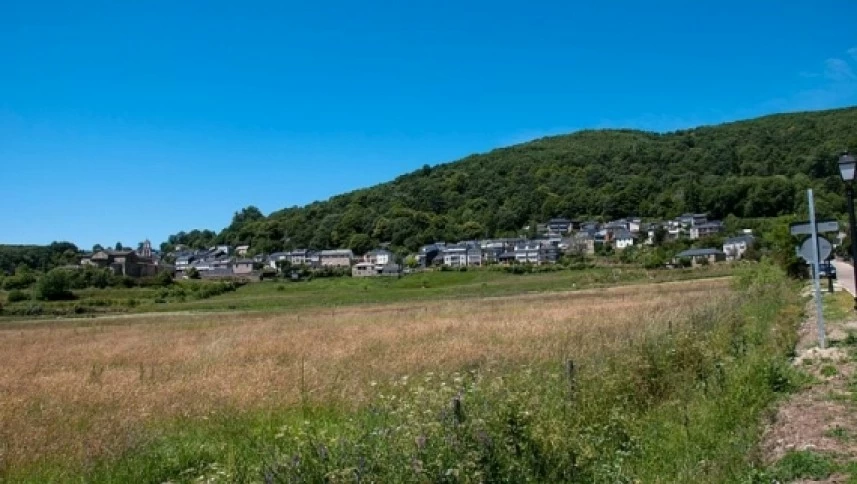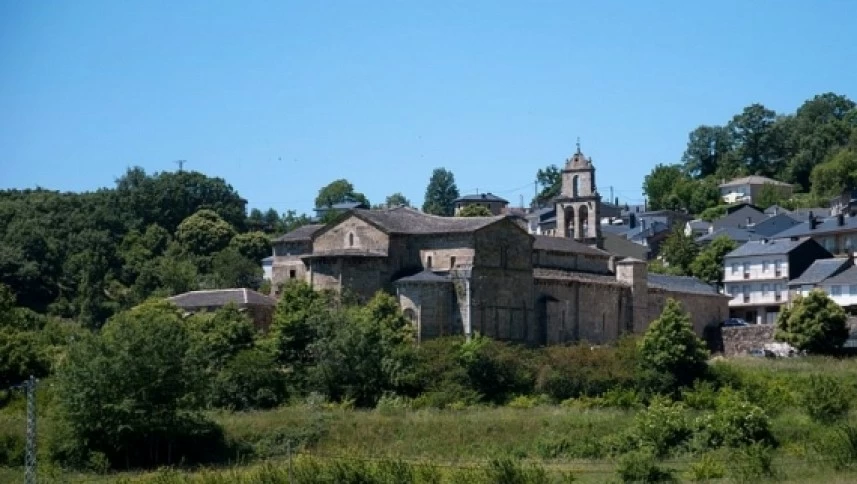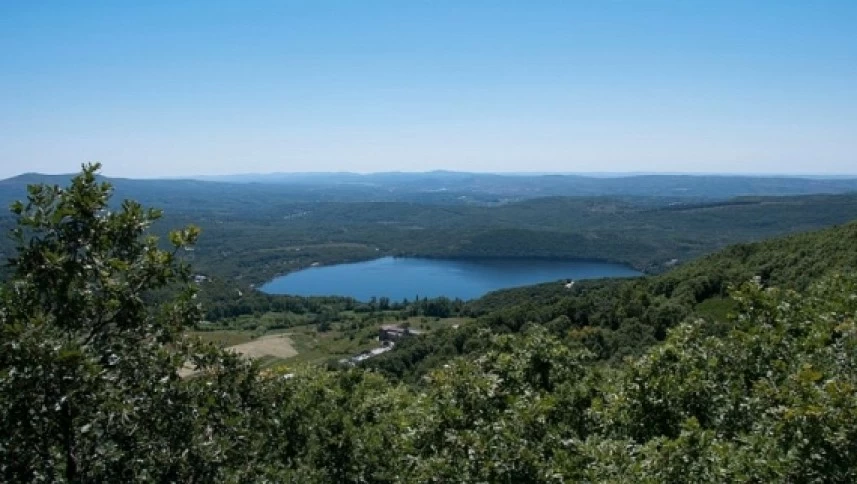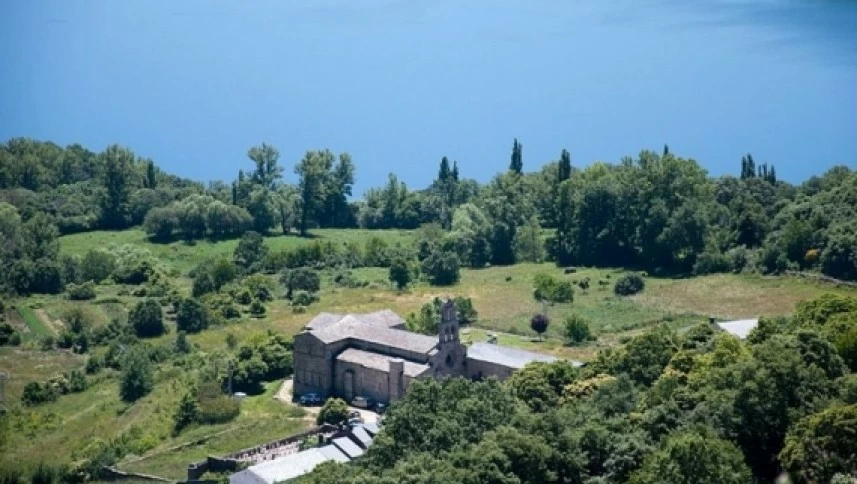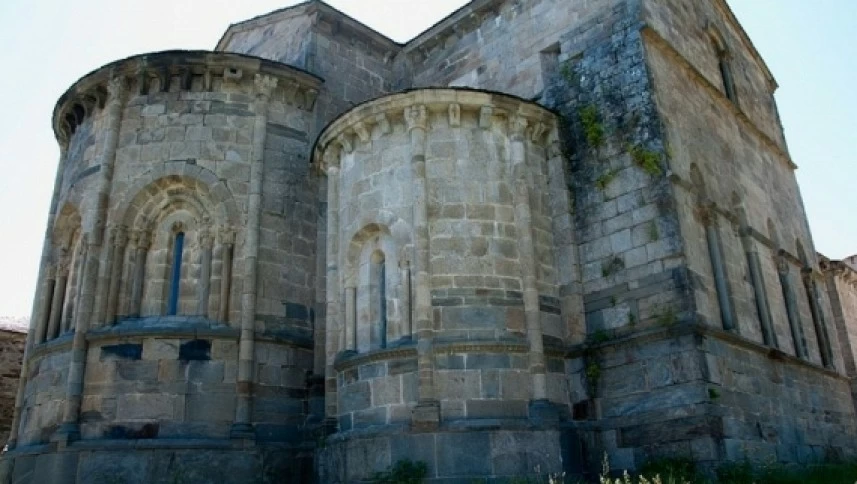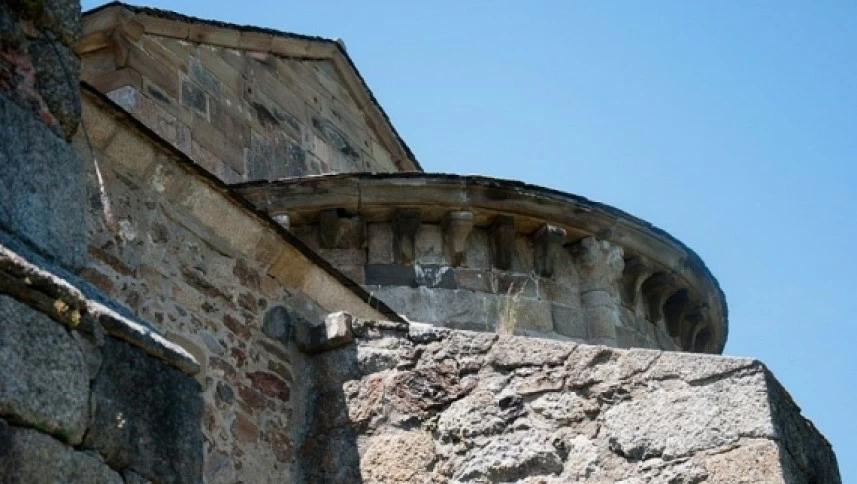San Martín de Castañeda
A beautiful corner of Sanabria
San Martín de Castañeda is located in one of the most beautiful places in Sanabria, on the southern slope of the Sospiaco mountain, some 250 metres above the level of Lake Sanabria. The village is named after a primitive monastery, built before the 10th century.
The monastery of this village has been a national historic-artistic monument since 1931, and was one of the largest religious complexes in the province of Zamora. As an artistic monument it is a marvellous example of Romanesque architecture. The 12th century church is one of the most valuable Romanesque monuments in Zamora. The church has three naves with large square pillars and a cubic transept. It has a Latin cross floor plan. The chevet is formed by an apse and two semicircular apses. The current façade of the church is from the 16th century and hides the old Romanesque façade. The patron saint is Saint Martin of Tours and his image is preserved inside the church. Another image of great value is the Virgen de la Peregrinación, which is the patron saint of the village. These two images plus the choir stalls and the Renaissance altarpiece form a valuable ensemble.
From San Martín de Castañeda, there are several hiking and mountain bike routes that allow us to enjoy the beauty of the surroundings.
One of them is the Senda de los Monjes: a path full of stones from the Middle Ages which was used by the monks and which links Ribadelago, San Martín de Castañeda and the east side of the lake, the cave of San Martín, Laguna de Peces, Peña Trevinca, Montalvo and Laguna el Acillo, among others.
Santa María (12th century)
"It would be difficult to find a monastery planted in a more beautiful place than this one: halfway up the slope of a mountain range, facing the sun, among orchards, meadows and woods and with the Lake of Sanabria at its feet, which could rival in fame and yields, with those of Italy, if we were to look inside here for what we envy outside".
Of the monastery rebuilt after 1150, all that remains is the church, which served as a parish church, since everything else, with the exception of a façade, collapsed after the exclaustration.
All that remains of the primitive 10th century building is the foundation stone embedded in the gable of the church, which describes a Latin cross with a stepped triangular chevet, a slightly marked transept in plan and well raised in height and three naves with four bays, which seems to be inspired by the Cathedral of Zamora, although in San Martín the pillars are cruciform towards the side naves and square towards the central one. As far as the roofs are concerned, it is worth mentioning the customary pitched vaults in the apsidal semicircles and buttressed barrel vaults in the straight bays that precede them; these chapels are separated from their corresponding naves by semicircular arches in the side naves and by a canting arch in the central nave; The main nave and the arms of the transept are also closed with pointed barrel vaults, but in the centre of the transept a ribbed vault was built, perhaps inspired by Moreruela, with the ribs resting on roll corbels. The secondary naves are built with slate masonry vaults, but some of them had to be reinforced with ribs; there is also a groin vault in the nave of the epistle.
Its chevet is particularly beautiful on the outside; the central apse is enlivened by four columns that divide it into five sections, the narrower ones at the ends, with the wide ones opening a window on columns with schematic vegetal capitals that support two arches. The cornice, in the Zamora style, runs over triangular corbels. The apses have three columns with vegetal capitals and only one window with a single round arch on small columns. The capitals and corbels are similar to those of the main chapel. The north gable of the transept is also very beautiful, with a blind arcade of four lancet arches on slender columns with vegetal capitals in the middle section; at the top, under the gabled roof, there is a window with a semicircular arch.
The monks who lived there obtained the right to fish on Lake Sanabria in 916 and made good use of its famous trout. Donations and purchases throughout the 10th to 12th centuries increased their patrimony, and in the middle of that century they enjoyed the protection of Alfonso VIII, who donated the monastery to Pedro Cristiano, a monk of Cariacedo and friend of San Bernardo, and to all those who accepted the Benedictine rule. In 1207 it was incorporated into the Cistercian Order, not without prior resistance.

